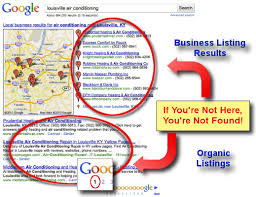 Search Engine Optimization Reigns Supreme for Pushing Local Web Traffic that Matters
Search Engine Optimization Reigns Supreme for Pushing Local Web Traffic that Matters
It’s the number one question that taunts website owners everywhere: “how can I push better local traffic to my site?” Sure, there are numerous ways to
send more visitors to a website, but that’s only the first step in a long road to creating a conversion, in the most basic sense of the word—the real trouble is bringing people to your local site who actually find what they’re looking for when they’re there.
Virtually any local website owner will take conversions over traffic when it comes to mapping out the efficiency of their website, but the real trouble isn’t stacking up these two variables—it’s determining what created them in the first place. This fact has caused many experts to look at how people get to a site and how it impacts their actions once they get there.
The results are very interesting—especially when you consider how much time is put into the different online marketing channels designed to generate clicks:
PPC and banner ads: the old standard
For a long time—and still today for some online advertisers—
Pay Per Click (PPC) and banner ads were a steadfast way to get people to come to a certain website. These ads can appear automatically near the top of Google’s returned search results, on the sidebar of many websites and even within the text of certain webpages, allowing advertisers to “sneak” their way into the visual field of prospective clickers.
The problem with many PPC and banner ad campaigns, however, is that they’re first and foremost advertisements—meaning that people have to be sold in order for them to truly convert their click. Unless the ad in question offers exactly what the searcher is looking for, it’s going to be money wasted for the advertiser.
Traditional SEO versus local optimization
We all know that
search engine optimization (SEO) has been a traditional online marketing channel since Google came about, but in that time, Google has changed the search landscape time and time again. Where traditional optimization was once enough to bolster the traffic to local business pages, it now needs to be shifted to more of a local marketing tone in order to truly push traffic that counts.
Local search engine optimization does two chief things that traditional SEO practices can’t: it specially caters to local searchers and creates a front-page listing that supersedes the powerhouse
websites that would otherwise dominate the traditional search landscape. These two factors give “mom and pop” shops an edge over international or nationwide players, focusing on local convenience.
Because of the long-time effectiveness of traditional SEO practices and the newfound benefits of local SEO optimization, many marketers have shifted away from PPC ads, banner ads and other forms of advertising to formulate a more organic approach to pushing website traffic to their local site.
The high return on investment
When you measure website traffic in dollars and cents, it all comes down to which marketing method gives you the most bang for your buck. While PPC and banner ads may be a quick way to push traffic to a site, when stacked against good SEO practices, the bottom line becomes less profitable.
Local optimization, combined with traditional SEO, offers lasting benefits that continue to generate traffic long after the budget for a PPC campaign has run out. Furthermore, those people browsing results and clicking on websites found through a traditional search are more likely to find what they’re looking for, without having to be sold on the click that they’ve made.